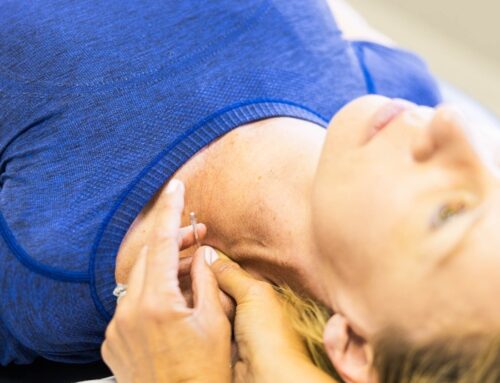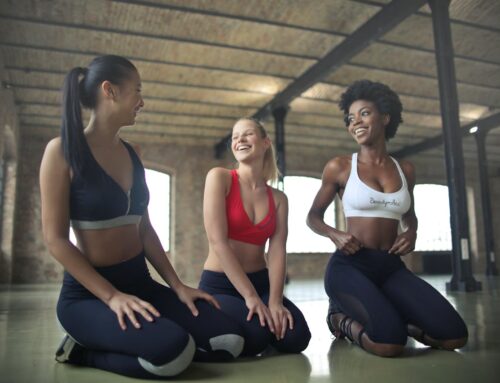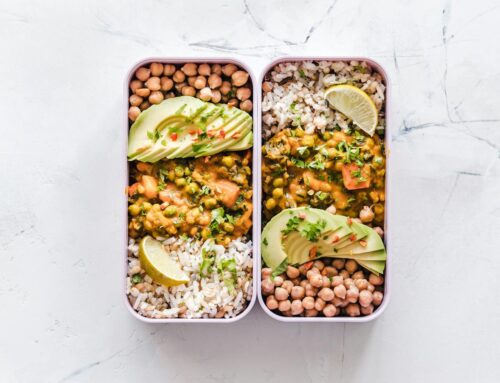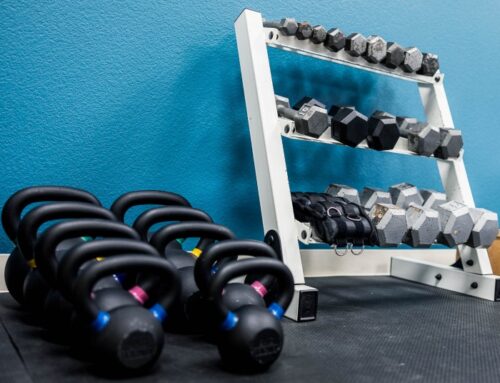Women need to be eating more protein. Culturally in the U.S., women have been taught to eat salads and veggies and to restrict calories to lose or maintain weight, especially as we get older. Women have also been taught that building muscle will make you look “bulky”, when in fact, it makes you strong and prevents diseases like osteoporosis as we hit perimenopause and menopause. Protein and amino acids are the building blocks of muscles, and women, across the board, are not getting enough protein. So, let’s change that!
Don’t be Afraid of Getting Strong
Women tend to get less protein because we are afraid of building muscle. If you were born in the 70s and 80s, it has been drilled into you that being “small”, “willowy”, or “lean” is the goal. And more likely than not, you have been eating less, rather than eating correctly for most of your adulthood. Thankfully, younger women are kicking this stereotype to the curb and are proud to be muscular and strong, but if you are in the former age group, it’s time to change your relationship with strength and protein.
We have to stop looking at the number on the scale as the measure of success or failure. Especially if we are building muscle, because muscle is smaller but heavier.
Think of it this way: if you have cotton balls in a bag, and then you put beads that are the equivalent weight of those cotton balls in another bag, those beads take up a lot less space but weigh the same.
Building muscle does not make you bulky. It actually helps your body lean out and become stronger. And this can mean you weigh more. You can consume more energy (good food) but take up less space. We build muscle with protein and fat in our diets. You cannot build muscle if you’re hungry. Hunger is a sign that your body wants more fuel, so let’s talk about what that protein-packed fuel should look like.
How to Get More Protein in Your Diet
By far, the best bang for your buck when it comes to getting good protein are animal sources. Animal sources are very bioavailable for us, meaning our bodies recognize them and know how to properly break them down into fuel to build muscle and strength. Amino acids and protein are the sources of muscle and without consuming these nutrients, we cannot build muscle.
The more variety the better. That said, be thoughtful about your animal protein choices – a beef hotdog is not a good choice, but grass-fed, pasture raised steak is. Look for good quality meat that identifies the source and is pasture raised, grass-fed so you know it had good nutrition and was able to move around. This ensures you are getting a quality product to consume. And diversify your choices – consider all different types of foul, pork, beef, bison, lamb, and wild caught fish and seafood.
In addition to animal protein, you can also get protein in foods like high fat Greek yogurt that unflavored and hard-boiled eggs. Be aware of dairy that is low fat because these usually have a higher glycemic index and can really spike blood sugar.
You can eat things like nuts and seeds, but these should be in moderation because you would have to eat so many of them to get and absorb the protein you actually need. Beans also have protein, but again, the quantity you would need to eat to get the equivalent protein in a chicken breast could mess with your digestion and cause gas and bloating.
Strength Prevents Diseases and Balances Hormone as We Age
We don’t like to talk about perimenopause and menopause because it means we are aging and that is scary for women. As our hormones decrease, protein actually helps keep testosterone and estrogen up and protein helps maintain metabolism by building muscle. Strength training uses up the fuel in the body and we need protein to be that fuel to build muscles. If you don’t have strength and muscle, your metabolism slows way down.
Decreases in estrogen during menopause contribute to bone loss. Muscles are attached to the bones and the more we create good stress by lifting weights, plyometrics, jumping, etc. the more stable our bones are. Building muscle prevents osteoporosis and promotes bone growth as we age. This process, known as bone remodeling, enhances bone density and strength, reducing the risk of fractures associated with osteoporosis.
Also, strong muscles provide better support for the skeletal system, reducing the risk of falls and subsequent fractures. And if you have a fall, that extra strength and padding from increased muscle mass makes it less likely that you suffer a fracture. Engaging in regular weight-bearing exercises, such as lifting weights, not only helps women build and maintain muscle mass but also serves as a proactive measure against osteoporosis, promoting overall musculoskeletal health as we age.





